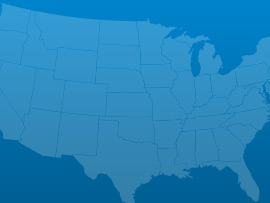Rail infrastructure in Arizona serves both freight and passengers. Most of the Class 1 freight, short line, industrial, and tourist railroads within Arizona were originally commissioned between 1880 and 1920, with a few exceptions, these lines have kept up with routine maintenance and modern improvements. In 2011, the State Rail Plan reported the operational performance of freight railroads was good but in need of a long-term vision and that there is adequate market reach. However, some rail lines are limited by urban encroachment, unavailable land for yard expansion, limited connections to Mexico and constrained freight car fleet markets. All of the railroads within Arizona are privately funded, and while investment has been high for two decades, future needs for capacity and improvement could require up to $850 million through 2035. Passenger rail operations and planning in Arizona consist of Amtrak intercity, interregional commuter rail, and regional commuter rail. Estimated needs for Arizona’s rail passenger services are between $6 to $12 billion to continue to serve urban corridor markets and be a viable alternative to air and car travel for intercity markets.
 Aviation
Aviation Bridges
Bridges Dams
Dams Drinking Water
Drinking Water Levees
Levees Rail
Rail Roads
Roads Transit
Transit Wastewater
WastewaterA: Exceptional, B: Good, C: Mediocre, D: Poor, F: Failing, ?: Incomplete
Each category was evaluated on the basis of capacity, condition, funding, future need, operation and maintenance, public safety, resilience, and innovation
Bridges
238 of the 7,862 bridges are structurally deficient
Bridges
$19.50 million in bridge funds came from the Federal Highway Bridge Fund in 2011
Dams
89% of the state regulated dams have an Emergency Action Plan
Dams
108 high hazard dams
Drinking Water
$7.4 billion in drinking water infrastructure needs over the next 20 years
Energy
6.941 gigawatt-hours of renewable energy every year, ranking it 14th
Hazardous Waste
9 sites on the National Priorities List
Levees
1,293 miles of levees
Public Parks
$377.0 million of unmet needs for its parks system
Rail
10 freight railroads covering 1,683 miles across the state, ranking 36th nationally by mileage
Roads
$1.2 billion a year in costs to motorists from driving on roads in need of repair, which is $247 /yr per motorist
Roads
7,190 of the state’s 65,262 public roads are major roads, and 7% are in poor condition
Schools
$6.4 billion in estimated school infrastructure funding needs
Transit
90.3 million annual unlinked passenger trips via transit systems including bus, transit, and commuter trains
Wastewater
$5.2 billion in wastewater infrastructure needs over the next 20 years

March 03, 2017
As the President’s repeated in his address to Congress his pledge to dramatically increase infrastructure spending to the tune of $1 trillion, various Congressional Committees

March 01, 2017
On Tuesday night, President Trump addressed a joint-session of Congress for the first time in his presidency. Infrastructure was among the many issues he discussed.

February 28, 2017
U.S. motorists set a new record for vehicle miles travelled (VMT) in 2016, driving over 3.2 trillion miles, an increase of 70 billion miles from

February 17, 2017
Romantic dates, the Grammy awards and celebrating black history are not the only milestones of this week; the Oroville dam crisis in California and the